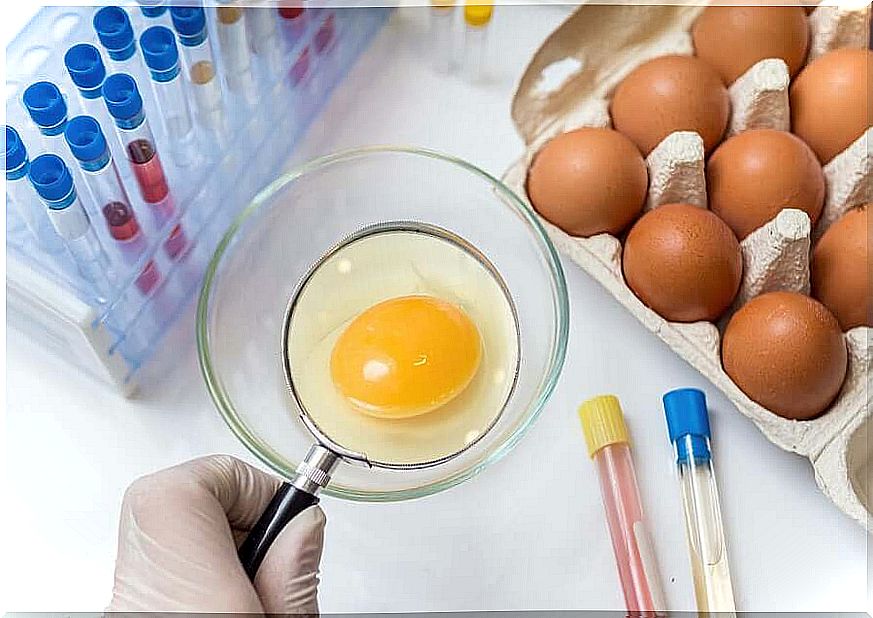Why Is Salmonellosis More Common In Summer?
Summer, sun and salmonella … These pathogens are particularly active in the warm season. But why is that so? Find out interesting facts about this topic today.

Salmonellosis is particularly common in summer . You are traveling, get to know other cultures and enjoy the beach … a wonderful experience, but unfortunately the hygienic conditions are not always optimal and the risk of infection is therefore greater. If you are not careful, you could get salmonella, because the causative pathogens feel particularly comfortable in warm temperatures and spread quickly.
Enterobacteria such as salmonella are present all year round. But in summer the risk of salmonella poisoning is particularly high. Find out more about this topic today.
Interesting facts about salmonellosis
Salmonella are rod-shaped Gram-negative bacteria that are facultatively anaerobic. This means that they can get energy even without oxygen. Unfortunately, the natural habitat of these microorganisms is the intestines of warm-blooded creatures, both animals and humans.
In order for salmonellosis to develop, certain conditions must be met, which is not that easy. The causative bacteria usually do not survive the acidic pH of the stomach and die before they reach the intestines. Those bacteria that make it then have to take on the bacteria in the intestinal microbiota. In addition, the intestinal transit usually takes place relatively quickly, which means that the pathogens are often simply discharged again.
Only a small percentage of these pathogens reach the intestinal mucosa, where Salmonella can colonize and multiply. When this is the case, the following typical symptoms arise:
- diarrhea
- fever
- stomach pain

Why is salmonellosis more common in summer?
The answer is very simple: at higher temperatures, these bacteria multiply particularly well and quickly. You can think of bacterial growth like a roller coaster:
- In the start-up phase, the bacteria colonize a medium, in the case of salmonella it is uncooled, raw food.
- This is followed by exponential growth in which each bacterium produces more bacteria. The technique used for this is called binary fission. The cell divides into two parts that grow and in turn reproduce. When the right conditions are in place (that is, in this case, when warm temperatures are present), Salmonella growth accelerates exponentially.
- Then it comes to the stationary phase (on the plateau of the roller coaster) in which the bacteria grow and then die due to a lack of nutrients and a lack of space, since the system has reached its capacity limits. The number of bacteria is peaking.
- After this phase, the dying phase begins , because the lack of nutrients and the accumulated toxins end the life cycle of the bacteria.
In the exponential and stationary phase, the bacterial load is particularly high, which means that the risk of infection is also high. The most common pathogens in summer. If there is contact with poisoned food, infection with salmonella is possible. However, it is not known how large the bacterial load actually has to be or how many bacteria have to get into the body through nutrition in order to be poisoned. It is estimated that the number is between 1 and 10 million.

Environmental and anthropic factors
As already mentioned, Salmonella multiply faster in warm temperatures. Therefore, the risk of infection is greater in summer. But there are other factors that play a role as well. Certain habits can also promote infections:
- Raw food without appropriate hygiene measures or sanitary controls
- Take uncooked and unrefrigerated food with you (e.g. for a picnic).
- Lack of hygiene at the dining area, with the materials or utensils
Other factors can also increase the risk of infection. For example, a study published in the journal Foodborne Pathogens and Disease found that climate change in the US also appears to be linked to higher numbers of infections. This makes sense if we take into account the factors already explained.
Salmonellosis in summer: preventive measures
In order to avoid salmonellosis in summer (or at other times of the year), appropriate preventive measures are very important. Hygiene is fundamental and common sense should also be part of the decision-making process, for example when choosing a restaurant and meals.
The risk of food poisoning is particularly high in summer. This is why great care is also required when processing food. Salmonellosis can be very uncomfortable, so it is definitely better to prevent it!









